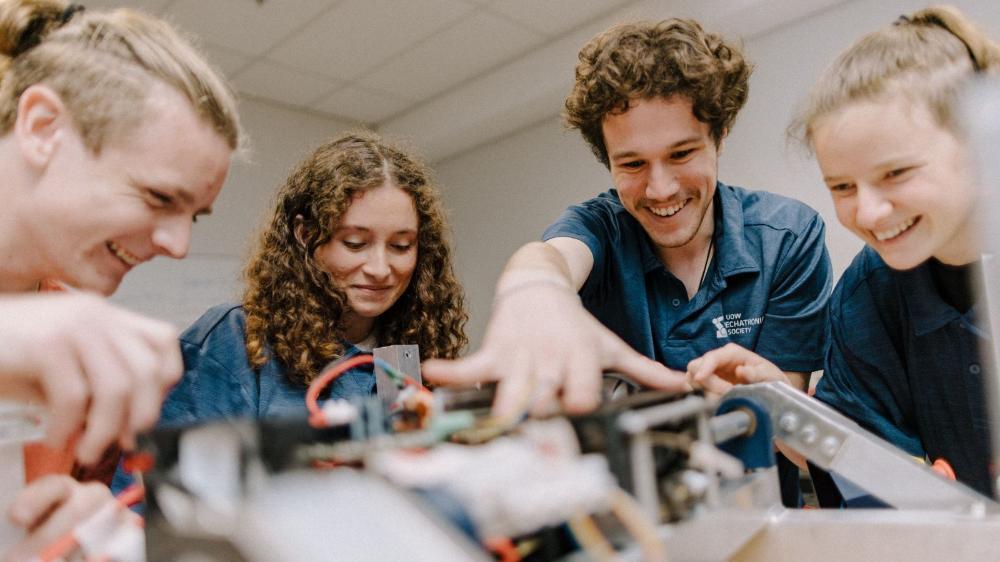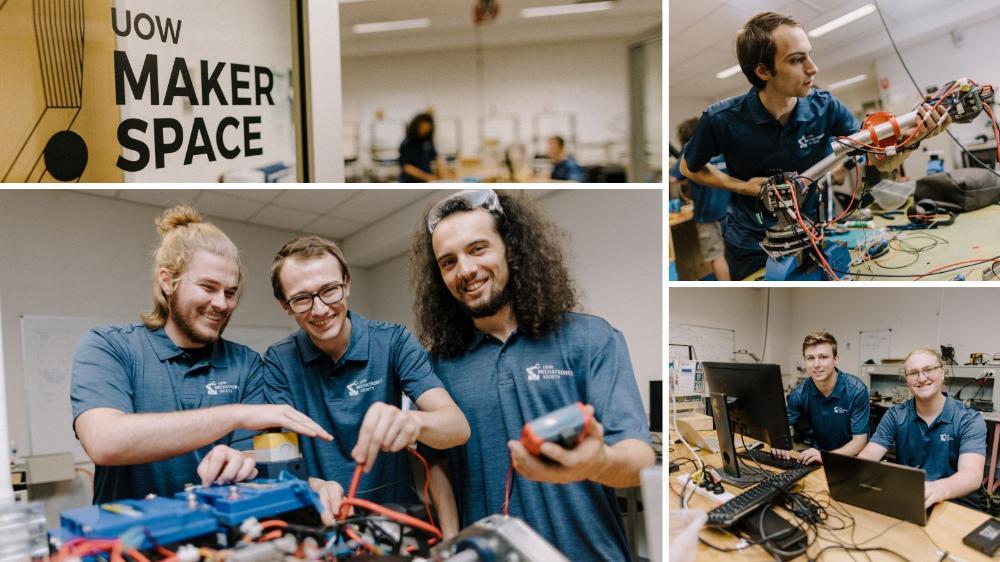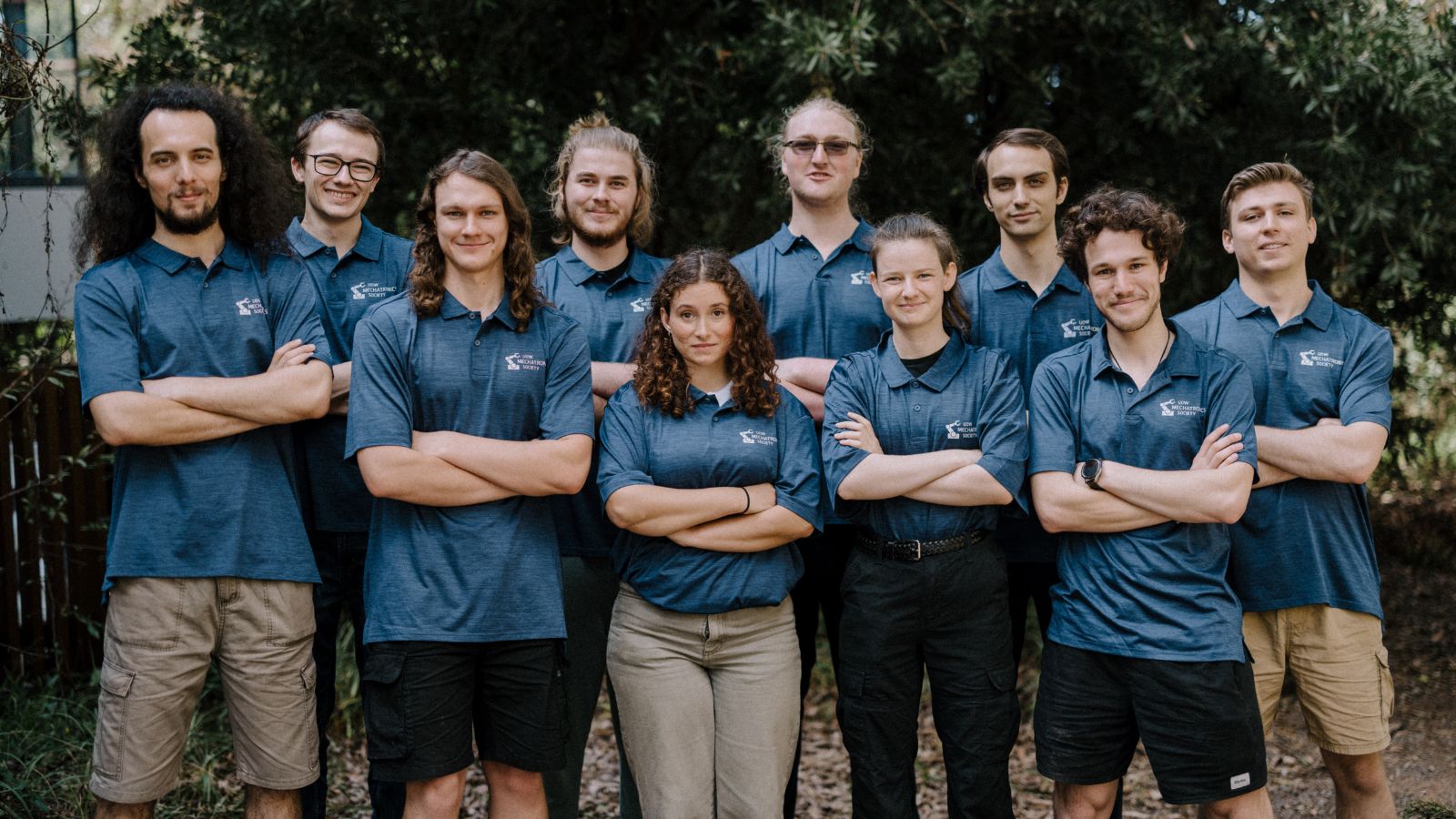March 20, 2024
UOW’s lunar rover to compete against world’s best
Students off to Adelaide for coveted robotics competition, Rover Challenge
For the first time a student team from the University of Wollongong (UOW) have been selected to participate in the Australian Rover Challenge (ARCh), hosted by the University of Adelaide.
The ARCh is an annual robotics competition where university students from across Australia and around the globe design and custom-build semi-autonomous rovers that compete across a lunar mission, in a simulated lunar environment.
A group of 14 students, competing as the UOW Rover Team, will participate in the 2024 ARCh in Adelaide for the next five days (Wednesday 20 March to Sunday 24 March), competing against teams from Poland, India and Bangladesh, as well as 10 other teams from around Australia.
The competition aligns with the increasing interest in lunar exploration and the development of technologies that may be crucial for future lunar missions.
UOW undergraduate student Connor Kellalea is the UOW Rover chassis team lead and has been instrumental in bringing the team together through his involvement in the student-run Mechatronics Engineering Society, where he is the current treasurer.
The mechatronics and finance student said the team have spent the last three months refining, building and iterating to make the top 10 teams invited to compete in the ARCh. The team is currently sitting in ninth position.
“It is a huge time commitment. We worked on it the entirety of the summer holidays. We were in the labs on the first week of the year, just building and modelling it all up. It was tough,” Connor said.
“The start of the engineering process is to figure out what the problem is, research it, try to come up with your own solution, then adapt it and iterate over time until you get the final thing that can compete on a simulated lunar surface.”
The competition aims to inspire the next generation of space engineers to learn-by-doing through a hands-on simulated mission to the Moon and to display Australian student talent and capability in space activities.
It is the UOW Rover Team’s first year entering the competition. They have been successful in both the Critical Design Review and Systems Acceptance Review phases, demonstrating to the judges they have a viable rover design to compete in the ARCh.

The UOW Rover arm team working on the rover in the UOW Makerspace. Photo: Michael Gray
The team have formed smaller specialised units to tackle the competition, with a chassis, electrical, software and arm team.
Competitors display their skills and undertake a range of tasks including navigation, resource exploration, construction and mapping.
“We put the rover on a platform and then drive it around, pushing buttons with the arms, pulling levers and hooking up to fuel connectors,” Connor said.
“In the second task, teams must move rocks out of the way and erect pavers for the rover to drive over, emulating if we were around the main camp site on the moon. Instead of having the dust kick up, the pavers provide dust mitigation.”
In the lead up to Adelaide the team have been busy with test missions at Towradgi Beach.
For Georgi Coddington, UOW Mechatronics Society’s Vice President of Communications, working on the Rover Challenge has been the perfect opportunity to align her passion for the space industry with her studies in mechatronic engineering and mathematics.
Georgi has been focused on securing sponsorship and financing for the project to get the team to Adelaide. The team has secured two sponsors and subject matter experts to assist the team.
With aspirations to study a master’s in aerospace engineering after she graduates, Georgi is in a unique position as she works in the space industry as a Deputy Director of one of the Australian Youth Aerospace Association programs.
“In some way securing sponsors has been really difficult because we haven’t done it before, however there are a lot more replies when you have an in with the industry,” Georgi said.
“As the club grows a bit more, we will have the opportunity to participate in a lot of competitions and grow our connections.”

Students in the UOW Makerspace building the rover. The team have formed smaller specialised units to tackle the competition, with a chassis, electrical, software and arm team. Photo: Michael Gray
The ongoing support from the Faculty of Engineering and Information Sciences has opened many doors for the team, particularly through access to the UOW Makerspace and student workshop.
Dr Joseph Polden, Research Fellow from Facility for Intelligent Fabrication and the School of Mechanical, Materials, Mechatronic and Biomedical Engineering, said the team have come together quickly to address some interesting space engineering problems.
“The students are handling everything, from organising weekly progress meetings to tackling all the technical aspects of the rover's design,” Dr Polden said.
“This society is in a brand-new iteration, and they have nailed down these processes in their first go. Their self-sufficiency, efficiency and technical achievement are seriously impressive.”
Main photo: The UOW Rover team, back row (left to right), Pierce O’Connor, Ethan Christensen, Hunter de Jong, Bodhi Bailey, Oliver Waldock. Front row: Adem Benten, Alex Hitchens, Georgi Coddington, Izzy Gill, Connor Douglas Kellalea
